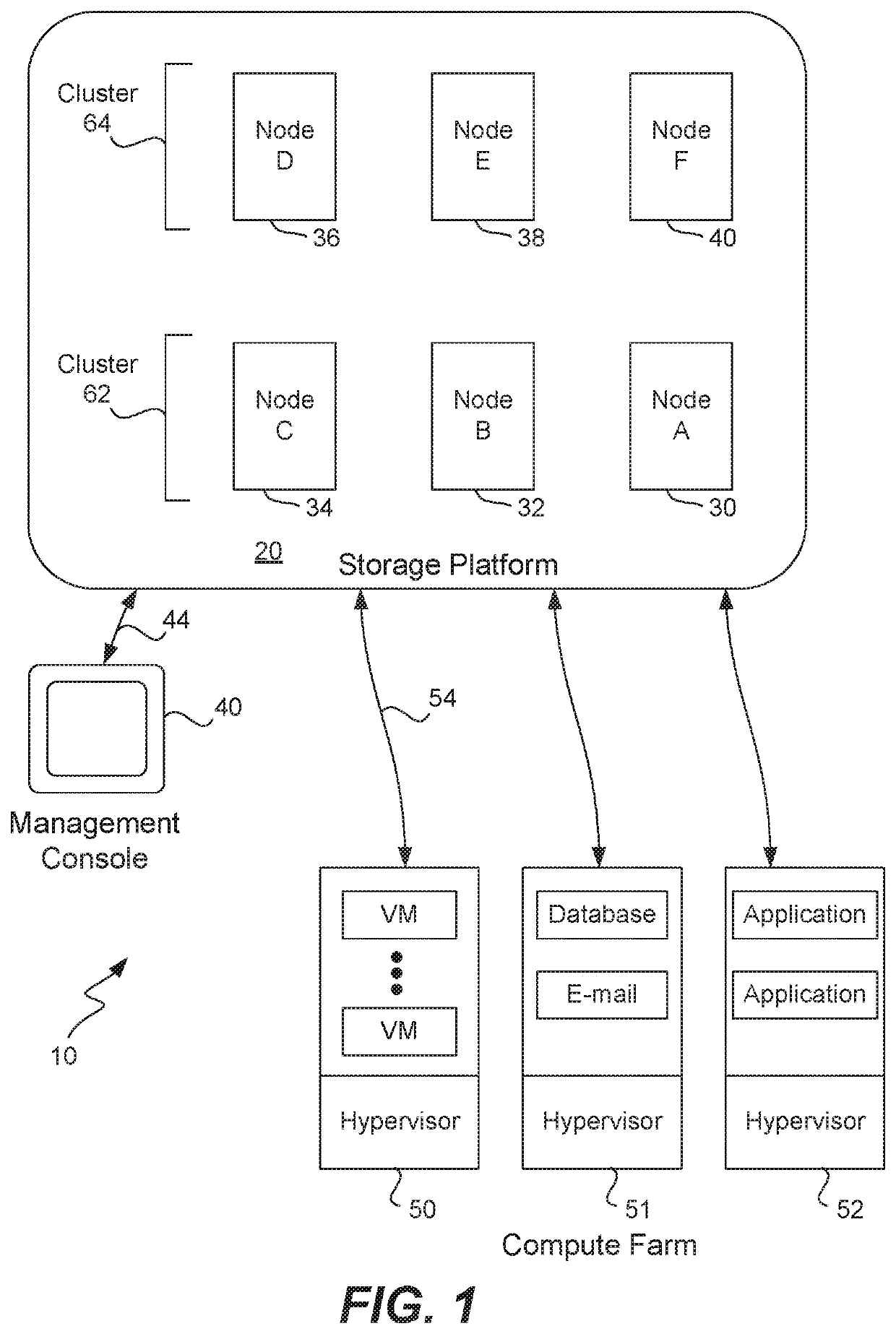Synchronization of metadata in a distributed storage system
- Summary
- Abstract
- Description
- Claims
- Application Information
AI Technical Summary
Benefits of technology
Problems solved by technology
Method used
Image
Examples
Embodiment Construction
Storage System
[0028]FIG. 1 illustrates a data storage system 10 that may be used in one embodiment of the invention having a storage platform 20. Included within the storage platform 20 are any number of computer nodes 30-40. Each computer node of the storage platform has a unique identifier (e.g., “A”) that uniquely identifies that computer node within the storage platform. Each computer node is a computer having any number of hard drives and solid-state drives (e.g., flash drives), and in one embodiment includes about twenty disks of about 1 TB each. A typical storage platform may include on the order of about 81 TB and may include any number of computer nodes. One advantage is that a platform may start with as few as three nodes and then grow incrementally to as large as 1,000 nodes or more.
[0029]Computers nodes 30-40 are shown logically being grouped together, although they may be spread across data centers and may be in different geographic locations. A management console 40 us...
PUM
 Login to View More
Login to View More Abstract
Description
Claims
Application Information
 Login to View More
Login to View More - R&D
- Intellectual Property
- Life Sciences
- Materials
- Tech Scout
- Unparalleled Data Quality
- Higher Quality Content
- 60% Fewer Hallucinations
Browse by: Latest US Patents, China's latest patents, Technical Efficacy Thesaurus, Application Domain, Technology Topic, Popular Technical Reports.
© 2025 PatSnap. All rights reserved.Legal|Privacy policy|Modern Slavery Act Transparency Statement|Sitemap|About US| Contact US: help@patsnap.com



